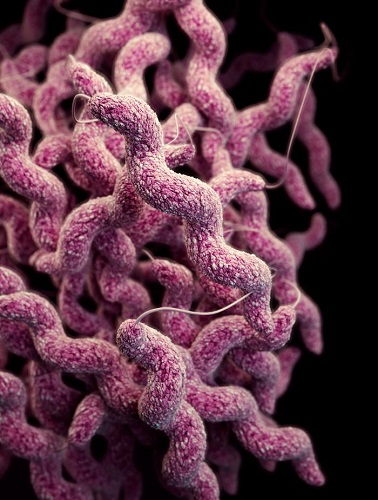Campylobacter jejuni is one of the leading causes of food poisoning worldwide.
Contents
Characteristics
- General shape of bacteria
- Growth conditions
- ETC
Treatment
- No treatment except in extreme cases - rehydration and electrolyte levels
Prevention
- General good hygiene practices
- Check food is cooked through
- ACT campaign?
Detection
Current detection methods for Campylobacter jejuni are time consuming or require trained professionals to carry out.
Culture-based screening
There are current guidelines for isolation and detection of Campylobacter jejuni from foods (ISO 10272-1:20063). The method, described by rapidmicrobiology.com, is quoted below:
"The pathogen is isolated by culturing on selective media followed by incubation at 41.5°C for 44 hours under microaerobic conditions. Food and environmental samples need an additional pre-enrichment step designed to facilitate the recovery of damaged cells. Enrichment is done using a selective enrichment broth medium which is then incubated at 37°C for five hours. Clinical samples can be cultured directly onto selective media."
The actual identification of the bacteria is done through looking at its morphology and growth characteristics. The selection factors used to isolate the colonies are usually antibiotics to inhibit growth of other bacteria which may be in the sample.
Culture-based screening is usually cost effective and does not require incredibly sophisticated equipment, though access to equipment such as incubators and BSL-2 lab space would be required. The main drawback in this case is the time required to obtain the final results. This technique is also labour intensive and is less sensitive than more up-to-date techniques which have a molecular biology basis.
Rapid detection methods
More recently, molecular-based techniques to detect Campylobacter jejuni have become more common. These are much more rapid and accurate than the culture-based screening described above, but do require more advanced instruments and people with much more training in order to carry out the techniques. These methods also cannot distinguish between dead and live cells.
Our project
- We looked at these drawbacks for current detection systems and decided to make a beautiful device



